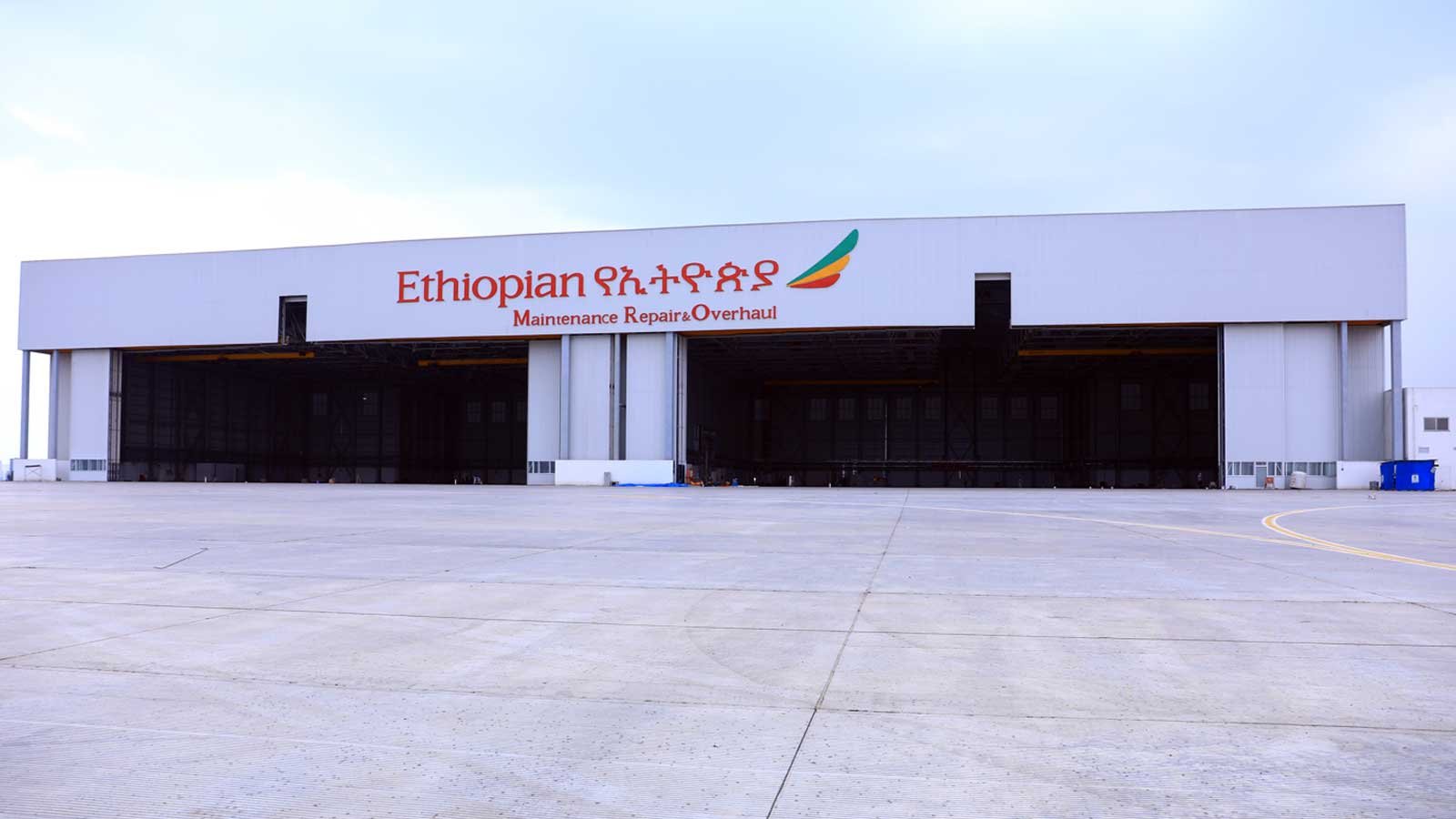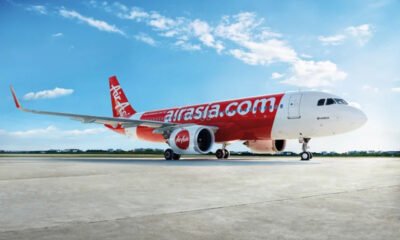Travel Trends
How Oil Prices Influence Global Tourism and Future Travel Trends Across Major Destinations You Need To Know

Monday, July 28, 2025
Fluctuating oil prices have a profound effect on global tourism, shaping both operational costs for the travel industry and consumer behavior across destinations.
The direct costs for airlines, cruise lines, and ground transport, including fuel and energy expenses, are heavily impacted by changes in oil prices.
Moreover, the indirect effects on discretionary income and consumer confidence play a significant role in determining travel patterns and future travel demand in major destinations around the world.
The travel and tourism industry is notably vulnerable to oil price fluctuations due to its heavy dependence on transportation. From international flights to local ground transport, the cost of mobility is intricately tied to the price of crude oil.
The impact of rising oil prices on travel costs is immediate, causing airlines and other service providers to adjust their pricing strategies in response to increased fuel costs. These price changes, in turn, influence consumers’ travel decisions, affecting both the frequency and type of trips taken.
The Direct Impact of Oil Price Changes on Travel Operations
Oil price fluctuations directly affect the operating costs for airlines, cruise lines, and other transport services.
For airlines, jet fuel is one of the largest operational costs, comprising nearly 28.7% of global airline expenses in 2022. When oil prices rise, the cost of fuel increases, and airlines typically pass these additional costs on to consumers in the form of higher ticket prices.
This shift can result in decreased demand, especially in markets where consumers are more price-sensitive.
Airlines have developed strategies to mitigate the impact of fuel price volatility, including fuel hedging, fleet modernization, and route optimization. These measures help to reduce the impact of rising fuel costs by locking in prices for future fuel purchases and improving overall operational efficiency.
Additionally, modernizing fleets with more fuel-efficient aircraft can lower long-term fuel consumption, while route optimization ensures that flights are taking the most efficient paths to minimize fuel use.
Similarly, cruise lines, which also rely heavily on oil, are particularly vulnerable to price increases. Fuel represents about 30% of a cruise ship’s operating expenses, and rising oil prices can significantly erode profit margins.
To counteract this, many cruise lines are investing in more energy-efficient ships, transitioning to alternative fuels like liquefied natural gas (LNG), and adopting energy-saving technologies to optimize fuel consumption and reduce emissions.
The Indirect Effects on Consumer Behavior and Travel Demand
While the direct effects of oil prices on operational costs are clear, the broader economic implications also influence consumer behavior and demand for travel. Rising fuel costs act as a “hidden tax” on disposable income, especially for lower-income households. As fuel prices rise, consumers may choose to reduce their travel budgets, opt for shorter trips, or even delay their travel plans altogether. These changes in behavior can lead to a noticeable reduction in discretionary spending, impacting both domestic and international tourism.
When fuel prices are low, however, consumers typically have more disposable income to spend on travel, leading to an increase in demand for vacations and leisure activities. As oil prices decrease, the affordability of long-haul flights, cruises, and road trips improves, encouraging travel to far-flung destinations. This dynamic is particularly noticeable in regions with a high dependency on oil, where price changes can significantly influence both consumer spending and tourism revenues.
Moreover, oil price volatility can impact tourist arrivals and spending patterns. Periods of price stability often have a more positive effect on tourism than fluctuations, as consumers are more confident in their ability to budget for travel. In contrast, sharp increases in oil prices can create uncertainty and discourage travelers from committing to long-term travel plans. As a result, travel destinations that rely on international tourists may experience slower growth during periods of oil price volatility.
Oil Price Fluctuations and the Shift Toward Sustainable Travel
In response to the challenges posed by rising fuel prices, the tourism sector is increasingly focusing on sustainability and energy efficiency. Sustainable travel practices, such as the use of alternative fuels, energy-efficient transportation, and eco-friendly accommodations, are gaining traction across the industry.
For example, airlines are investing in sustainable aviation fuels (SAF), which offer a cleaner alternative to traditional jet fuel, while cruise lines are exploring LNG and biofuels to reduce their carbon footprint.
The shift toward more sustainable practices is not only an environmental initiative but also an economic strategy. By reducing dependence on traditional fossil fuels, the tourism industry can better withstand fluctuations in oil prices and reduce its vulnerability to future energy shocks.
This transition to cleaner energy sources is essential for long-term industry resilience, especially as climate change concerns continue to drive consumer demand for more eco-friendly travel options.
The Future of Travel and Tourism in a Volatile Energy Market
The future of global tourism and travel is closely linked to the evolution of energy markets, particularly oil. As oil prices continue to fluctuate, both the tourism industry and consumers will need to adapt to new economic realities. Travel providers will need to balance the rising costs of fuel with the demands of price-sensitive consumers, while also investing in sustainable technologies to ensure long-term growth.
For major travel destinations, strategic planning and investment in alternative transportation infrastructure will be essential to mitigate the impacts of oil price volatility. Public transportation, electric vehicle infrastructure, and the development of more energy-efficient travel options will play a key role in shaping the future of travel. By focusing on energy diversification and innovation, the tourism industry can build a more resilient and sustainable future that can better withstand the challenges posed by global energy markets.
Conclusion: Navigating the Complex Relationship Between Oil Prices and Tourism
The link between oil prices and global tourism is multifaceted and dynamic. While the travel industry remains resilient, it faces significant challenges due to oil price fluctuations, which affect operational costs and consumer behavior. However, the sector’s ability to adapt through fuel hedging, technological innovation, and the adoption of sustainable practices is helping to shape a more stable and sustainable future for tourism. As oil prices continue to play a pivotal role in shaping the travel landscape, both travel providers and consumers must stay informed and adaptable to the evolving energy market.
Travel Trends
American Airlines expands Premium Economy service to New York-Los Angeles route

FORT WORTH, TEXAS – For travelers looking for extra comfort when traveling between New York and Los Angeles, American Airlines will begin offering Premium Economy service on the transcontinental route in October.
“We are excited to provide customers the opportunity to experience our Premium Economy service on our premier domestic route,” said Heather Garboden, American’s Chief Customer Officer. “With the domestic debut of Premium Economy, customers will enjoy a more comfortable seat, enhanced amenities and elevated dining with hot entree choices when traveling coast-to-coast.”
Customers who choose Premium Economy on American’s transcontinental route receive Priority check-in, security and boarding. Once on board, customers will find a personal amenity kit with premium skincare products and travel essentials. During the flight, customers can relax in wider seats with more legroom and comfortably rest with an Ostrichpillow® lumbar pillow and crepe weave blanket.
As part of the inflight service, customers can indulge in complimentary drinks while savoring a hot meal with salad and dessert served on chinaware. Customers can easily charge electronic devices with in-seat power and watch on-demand entertainment on larger monitors with noise-reducing headphones.
Premium Economy service will be available on select flights between New York’s John F. Kennedy Airport (JFK) and Los Angeles International Airport (LAX) starting Oct. 5. Tickets will go on sale July 28 on aa.com and American’s mobile app.
Second-quarter 2025 financial results
American Airlines Group Inc. also reported its second-quarter 2025 financial results, including:
- Record quarterly revenue of $14.4 billion
- Second-quarter GAAP net income of $599 million, or $0.91 per diluted share
- Excluding net special items1, second-quarter net income of $628 million, or $0.95 per diluted share
- Second-quarter operating margin of approximately 8%
- Ended the quarter with $12 billion of total available liquidity
“American delivered record revenue in an evolving demand environment in the second quarter thanks to the hard work and dedication of our team,” said American’s CEO Robert Isom. “We remain confident that the actions we have taken over the past several years to refresh our fleet, manage costs and strengthen our balance sheet position us well for the future. The investments we have made toward achieving our revenue potential, including bolstering our network, customer experience and loyalty program, are paying off, and the team remains focused on delivering on our long-term strategy.”
The article American Airlines expands Premium Economy service to New York-Los Angeles route first appeared in TravelDailyNews International.
Travel Trends
Ethiopian Airlines Group inaugurates major MRO expansion

ADDIS ABABA – Ethiopian Airlines Group has unveiled a significant expansion of its Maintenance, Repair, and Overhaul (MRO) capabilities with the inauguration of three state-of-the-art facilities: a new Component Maintenance Workshop, a Central Warehouse, and a 2-Bay General Maintenance Hangar. The new infrastructure is set to be a game changer in enhancing operational efficiency and reinforcing Ethiopian’s position as the leading MRO service provider on the continent.
The inaugural ceremony took place at the Ethiopian MRO Services premises in Addis Ababa on 22 July 2025, and was graced by the presence of Ethiopian Airlines Managment Board Chairman, His Excellency Let. Gen. Yilma Merdasa, Ethiopian Airlines Group CEO Mr. Mesfin Tasew, project participants, and Ethiopian Airlines Executives.
Speaking at the event, Mr. Mesfin Tasew, Group CEO of Ethiopian Airlines stated, “The completion of these advanced MRO facilities significantly enhances our technical capability and reinforces our position as a key player on the global stage. With expanded capabilities and cutting-edge systems, we are now better equipped to deliver efficient, high-quality maintenance services for both our growing fleet and third-party operators.” He added, “As we strengthen our infrastructure, we reaffirm our dedication to supporting Africa’s aviation renaissance and solidifying Ethiopia’s place as a continental hub for world-class aviation services and sustainable growth.”

With a total investment exceeding USD 150 million, and a construction timeline of three years, the development was executed in partnership with China National Aero-Technology International Engineering Corporation (CAIEC), China Communications Construction Company (CCCC), and DAR Al-Handasah Consultants (Shair and Partners) for the construction of the three facilities.
The newly inaugurated facilities mark a significant leap in Ethiopian MRO’s technical infrastructure and service capability. Ethiopian MRO Services already has over 1,200 components in its FAA approved component repair capability list. In addition, the new Component Maintenance Workshop brings specialized shops for B737 & Q400 main and nose landing gear repair, ATE, IDG, ACM, as well as ATS Components adding over 170 new components in the existing capability list. This expansion strengthens support for both the airline’s fleet and the broader aviation community across the continent and beyond.
The addition of two wide body General Maintenance Hangars brings the total number of hangars at Ethiopian MRO to eight, significantly increasing capacity for comprehensive aircraft maintenance.
Meanwhile, the Central Warehouse, with a built-up area of 15,000 m2 and a storage volume of 25,500 m3, incorporates an advanced Automated Storage and Retrieval System (ASRS), enhancing the efficiency of spare parts management and supporting smoother maintenance operations.
The article Ethiopian Airlines Group inaugurates major MRO expansion first appeared in TravelDailyNews International.
Travel Trends
July 27 Travel News: Overtourism, Trips Safety, and Climate Impact on Global Tourism Trends Reshaping This Sector

Sunday, July 27, 2025
The tourism industry in 2025 is experiencing significant shifts, as cities around the world struggle to balance growth with sustainability and traveler safety. A new wave of regulations is emerging in response to overtourism, with high-profile destinations such as Venice and Barcelona leading the charge. Meanwhile, safety concerns are prompting travel advisories, and severe weather is causing major disruptions in aviation. As travelers continue to adapt to new realities, the impact of climate change on tourism becomes an increasingly pressing issue. Here’s a closer look at the global travel landscape in 2025.
Tourism Under Pressure: Overtourism and Its Global Impact
Overtourism is becoming one of the most pressing concerns in the global tourism industry. Popular destinations like Venice, Amsterdam, and Paris, once the crown jewels of European travel, are now leading efforts to curb excessive tourism and its negative effects on local communities and cultural heritage. Following in their footsteps, cities like Mexico, Japan, the U.S., and Indonesia are implementing new measures to regulate tourist flow.
Mexico, for instance, has introduced cruise restrictions in Hawaii, while iconic locations such as Machu Picchu in Peru and the historic districts of Kyoto in Japan are now imposing strict visitor limits. These measures aim to protect the environment and preserve cultural landmarks for future generations.
In addition to limiting tourism flow, several cities are introducing higher tourist taxes to help fund sustainability initiatives. Barcelona, for example, has raised its tourist tax, with plans to increase it to €8 by 2029. This trend is also visible in cities such as Rome, Paris, New York, and Montreal, where taxes are being adjusted to address the environmental impact of tourism and to fund local infrastructure projects.
Safety and Security: Travelers Navigate High-Risk Zones
While some destinations are focusing on managing tourist numbers, others are grappling with safety concerns, particularly in high-risk zones. In Mexico’s Tamaulipas state, the U.S. State Department has issued a “Do Not Travel” advisory due to ongoing cartel violence, including kidnappings and extortion. Local authorities have attempted to mitigate risks by increasing police presence, but conflicting messages from officials have left travelers confused and cautious about venturing into the region.
The U.S. government continues to monitor the situation closely, with the safety of tourists being a key concern for the broader region. While the U.S. is not the only country facing safety issues, this serves as a reminder of the risks that can emerge in certain parts of the world. Travelers are encouraged to stay informed about safety advisories before planning their trips to high-risk regions.
U.S. Aviation: Weather Disruptions and Airline Competition
In the United States, severe weather events are wreaking havoc on aviation schedules. Thunderstorms, flash floods, and high winds have led to the grounding of more than 250 flights across major airports, including Chicago O’Hare, JFK, and LaGuardia. Airlines such as Southwest, Delta, United, and JetBlue have been particularly affected by these weather disruptions, with additional delays expected as the storm system moves eastward.
Beyond the weather, the U.S. airline industry is also seeing shifts in passenger preferences. Legacy carriers like Delta and American Airlines continue to dominate, but low-cost airlines such as Allegiant, Sun Country, and Spirit are rapidly gaining market share. This growing trend towards budget travel reflects a post-pandemic shift in consumer behavior, with more travelers opting for affordable flights and fewer frills.
Canada’s Tourism Decline and the Shifting Travel Patterns
While some destinations are thriving, others are seeing significant downturns in tourism. Canada’s inbound tourism has dropped sharply in 2025, particularly from the U.S., UK, France, Germany, and Australia. Geopolitical tensions and changing travel habits are contributing factors to this decline, with many international travelers opting for alternative destinations.
At the same time, Canadian travelers are showing a preference for domestic vacations over international trips, particularly to the U.S. High travel costs and political polarization in the U.S. are pushing Canadians to explore their own country, with campaigns like “Canada Strong” promoting local tourism. This trend is part of a larger movement towards staying closer to home in response to economic and political uncertainties.
Climate Impacts on Travel: Extreme Heat Waves and Disruptions
As climate change accelerates, its impact on travel is becoming increasingly evident. The U.S. Gulf Coast and southeastern cities are currently experiencing a dangerous heatwave, with triple-digit temperatures and high humidity levels. Cities like Atlanta, New York, and Boston are under heat advisories, with health warnings urging travelers to stay indoors and avoid outdoor activities.
The extreme weather has also caused cancellations of outdoor events, further illustrating how climate change is disrupting travel plans. With global temperatures continuing to rise, it’s likely that more destinations will face similar challenges in the future, forcing travelers to rethink their summer vacation plans and consider alternatives to traditionally hot spots.
The Way Forward: Adaptation in a Changing World
As the tourism industry evolves in response to these challenges, there is a growing need for adaptation and resilience. Destination managers are increasingly focusing on sustainable tourism practices that balance the needs of travelers with the protection of local communities and the environment. Safety advisories are prompting tourists to be more cautious when choosing destinations, and extreme weather is reshaping travel patterns, especially in regions vulnerable to climate change.
The future of global travel will likely be defined by these challenges, with an emphasis on sustainability, safety, and climate adaptation. Travelers and industry leaders alike will need to stay informed and flexible as they navigate this ever-changing landscape.
-

 Brand Stories7 days ago
Brand Stories7 days agoBloom Hotels: A Modern Vision of Hospitality Redefining Travel
-

 Brand Stories2 days ago
Brand Stories2 days agoCheQin.ai sets a new standard for hotel booking with its AI capabilities: empowering travellers to bargain, choose the best, and book with clarity.
-

 Destinations & Things To Do1 week ago
Destinations & Things To Do1 week agoUntouched Destinations: Stunning Hidden Gems You Must Visit
-

 AI in Travel1 week ago
AI in Travel1 week agoAI Travel Revolution: Must-Have Guide to the Best Experience
-

 Brand Stories3 weeks ago
Brand Stories3 weeks agoVoice AI Startup ElevenLabs Plans to Add Hubs Around the World
-

 Brand Stories2 weeks ago
Brand Stories2 weeks agoHow Elon Musk’s rogue Grok chatbot became a cautionary AI tale
-

 Destinations & Things To Do2 days ago
Destinations & Things To Do2 days agoThis Hidden Beach in India Glows at Night-But Only in One Secret Season
-

 Asia Travel Pulse3 weeks ago
Asia Travel Pulse3 weeks agoLooking For Adventure In Asia? Here Are 7 Epic Destinations You Need To Experience At Least Once – Zee News
-

 AI in Travel3 weeks ago
AI in Travel3 weeks ago‘Will AI take my job?’ A trip to a Beijing fortune-telling bar to see what lies ahead | China
-

 Brand Stories3 weeks ago
Brand Stories3 weeks agoChatGPT — the last of the great romantics














You must be logged in to post a comment Login